In their introduction to the catalog of “I declare that I can paint for a living” exhibition in Grasse, Anne, Agnès and Francoise Costa, the owners of the Fragonard perfume company, pay a tribute to the curator, the formidable Carole Blumenfeld, 43, who discovered a painting by Marie Victoire Lemoine, 1754-1820, in the « purgatory » at the Louvre while researching this show. There were many more attributions and finds. After publishing in 2019, the catalogue raisonné of the daughter of a Grasse perfumer, Marguerite Gérard, 1761-1837, she developed a special relationship with Musée Fragonard, which owns the largest collection of her works in the world. And it was then perfectly natural to organize this summer show about five women painters, all from the same family, and contemporaries of Elisabeth Vigee Le Brun, 1755-1842, who was close to Marie Antoinette. I could not resist driving an hour to see this exquisite show and I realized how prominent the different Fragonard shops are in Grasse, a town which was Italian until 1861 and has the charm of the Mediterranean. For all these reasons, it is worth visiting it before October 8.
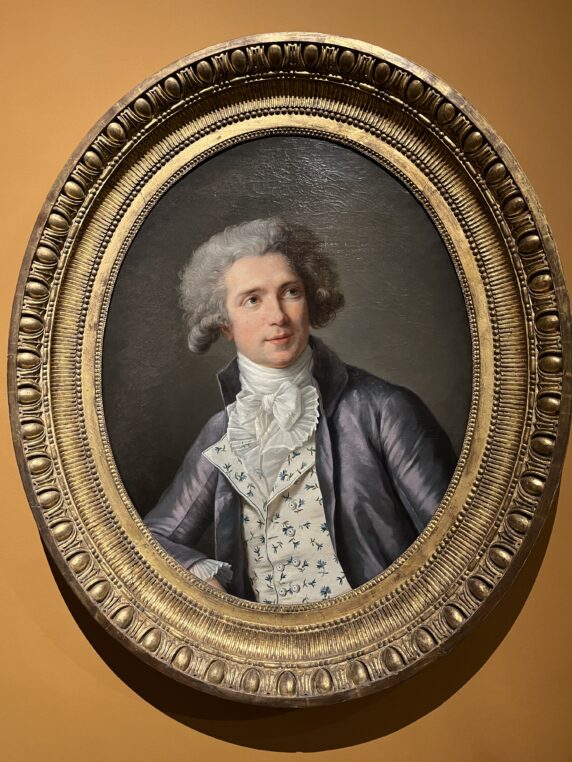
Marie-Victoie Lemoine, “François- Guillaume Ménageot”, cir 1783-1785, Versailles Musée national de Versailles et de Trianon, he was her teacher and also very close to Elisabeth Vigée-Le-Brun
The rue Jean Ossola, named after a minister who was mayor of Grasse at the beginning of the XX th century, is incredibly busy with tourists and temptations. The two museums, one devoted to Provençal costumes and the other to Jean-Honoré Fragonard and Marguerite Gérard are charming and the entrance is free. The four of five shops of decorative fabrics, summer dresses, perfumes, soaps and children clothes all called Fragonard, are such a source of modestly priced presents, that I had to wait for my male companions for at least a half hour. But back to the lady painters’ exhibition: it is a series of (mostly) feminine portraits dominated by Marie-Victoire’s and her sister Marie-Elisabeth’s talent, and their cousin’s Jeanne-Elisabeth Chaudet’s.
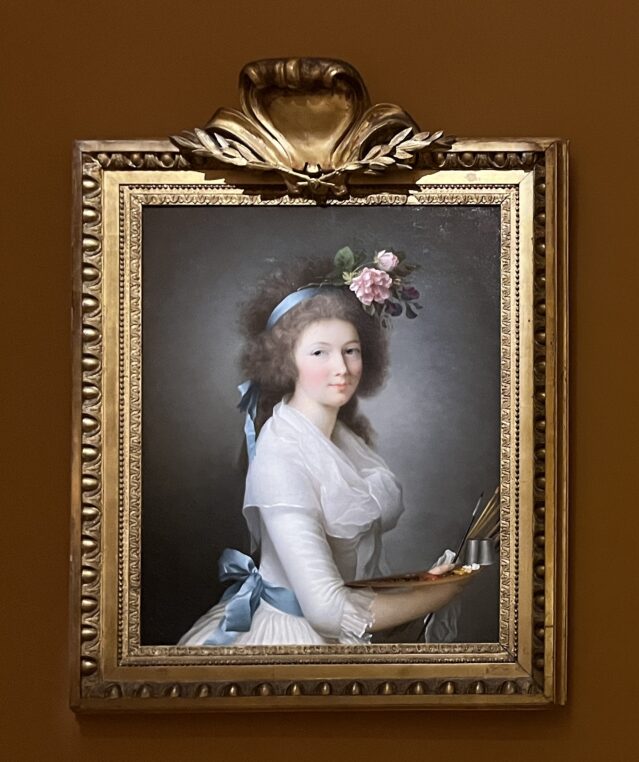
Marie-Elisabeth Lemoine, Portrait of an artist with her palette, cir 1787, private collection (formerly Guy de Rothschild’s collection)
A portrait of Anne Angelique Germiot, whose daughter married Duc de Saint Simon, was presumed to be by Vigée Le Brun and later by Marie Victoire Lemoine. It is now attributed to Jeanne-Elisabeth Gabiou, the cousin of the Lemoine’s who lived with them on rue de Richelieu and later married the sculptor Chaudet. There are other striking paintings by her in the show, “L’amour qui vient de dérober une rose” (Amour who has just stolen a rose), “A little girl trying to teach reading to a dog” and the cover of the catalog, “Young girl carrying her father’s saber” who is the same model as in “Little girl eating cherries”.
All these ladies lived through the French Revolution and members of their families (like Louis Joseph Gabiou) died in the war. They were a tightly knit circle and shared their teacher François-Guilluame Ménageot (who was also close to Vigée Le Brun) and their friends. Through long instructive cartels, Carole Blumenfeld allows us to share their creative lives. Marie-Victoire, her three sisters and her orphan cousin, all lived of their art in a family where the independence of the daughters was encouraged. She was never married but she emulated her siblings. And research has proved that some paintings were done with four hands. It is also interesting to note that most paintings come from private collections, so national recognition has not yet touched these lady artists.

Jeanne-Elisabeth Chaudet, “A young girl teaches her dog to read”, (a tribute to Fragonard’s “Education is everything”), 1799, private collection
The catalog is really wonderful with many reproductions of lost works (one has reappeared thanks to the publicity of the show). I was wondering about the degree of intimacy of some models who always seem to hold each other by the shoulder or by the neck. Especially on the first floor, in Marguerite Gérard’s paintings. Apparently she liked to keep an ambiguity in her models’ relations like in “A woman feeding her baby observed by her friend”, in 1801 and in “The good news” in 1804.
When you have visited the two floors of the museum with the extraordinary portrait of François de Bourbon in grisaille by Fragonard, you can let go and have a delicious ice cream next door or go wildly shopping. Le musée du costume et du bijou is also worth visiting. Both are free. Exhibition until October 8. Grasse is an hour from St Raphaël and 40 mns from Nice airport. You can also visit the perfume factories.
Carole Blumenfeld is also the curator of the exhibition at Palais Fesch, in Ajaccio, devoted to “Plon-Plon, a Bonaparte in red and gold”, on Prince Napoleon, the cousin of Napoleon III. Until October, 2.
Share this Post
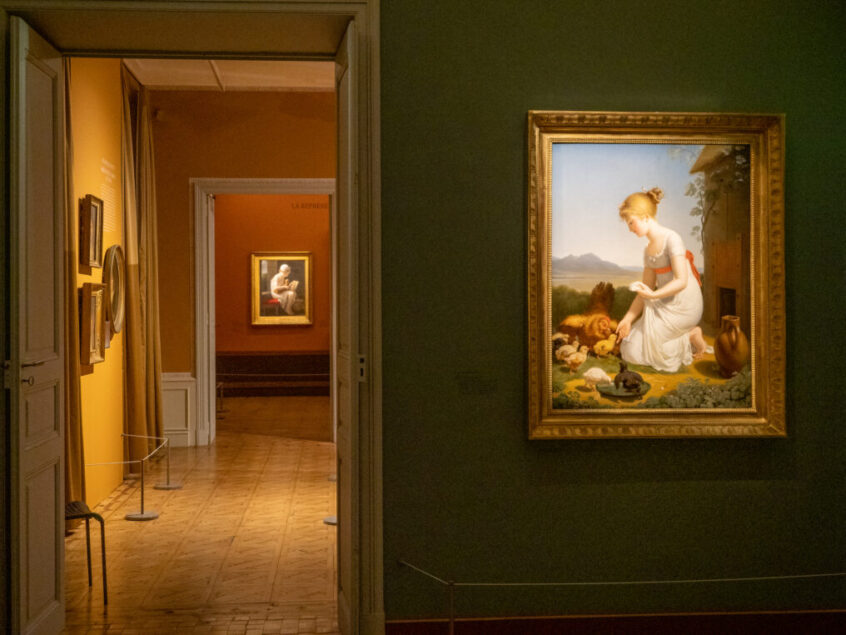
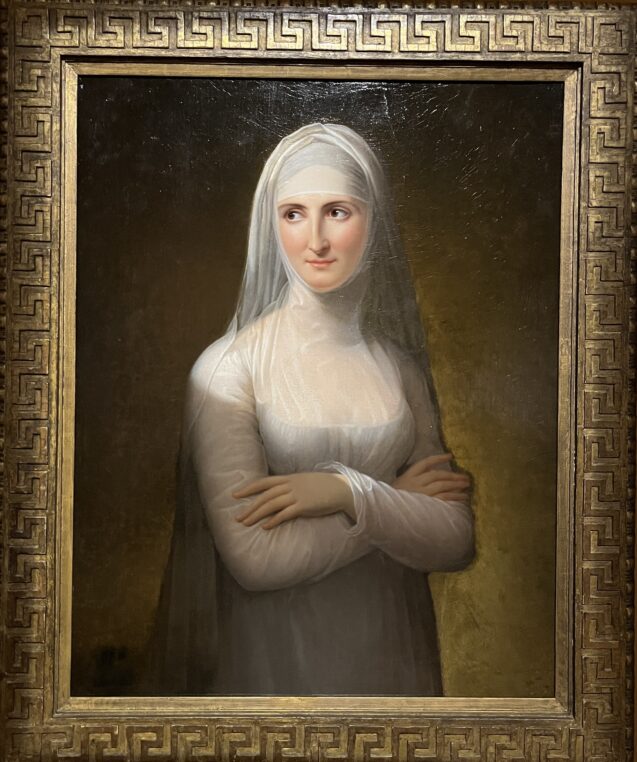

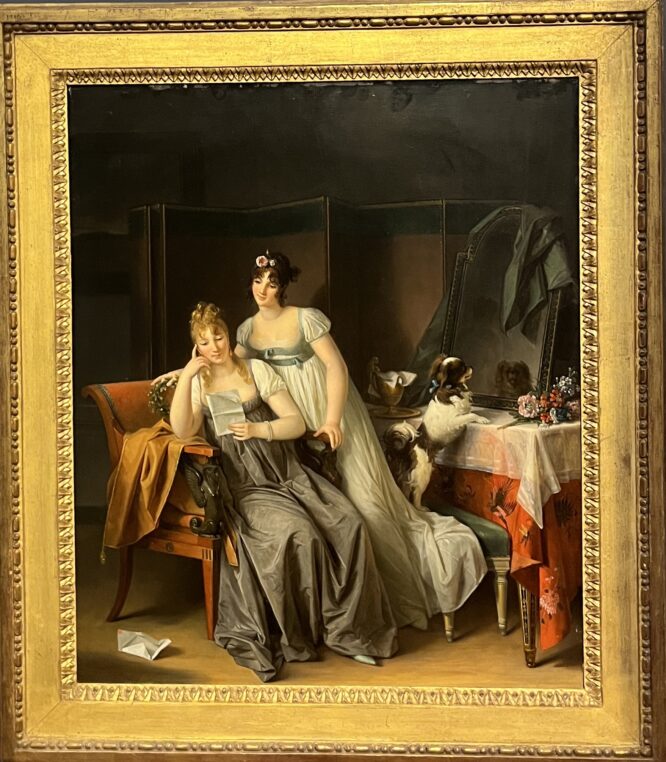
4 Comments on ““I can paint for a living”, at Musee Fragonard in Grasse.”
Thank you for this intriguing report of what seems to be a most fascinating exhibit ! What beautiful, luminous paintings.
Merci Chère Laure pour cet article exhaustif ! Agnes ,Anne et Françoise are very good friends and we intend to visit Grasse after August !…it s always very nice !Enjoy your summer .Dominique Nordlinger
Chère Madame,
Merci milles fois pour cet article si élogieux que vous avez écrit sur notre exposition et notre Maison.
Je transmets l’émail de Nathalie Brunel à mes deux sœurs qui pourront ainsi lire votre billet.
Très sincèrement
Anne Costa
Merci, Laure, pour ce merveilleux reportage sur l’exposition du musée Fragonard de Grasse.
L’ensemble est délicieusement sublime, particulièrement le très subtil portrait d’une” dame en novice” de Jeanne-Elizabeth Chaudet.
Bravo aussi à la conservatrice, Carole Blumenfeld.
Baci,
Jean